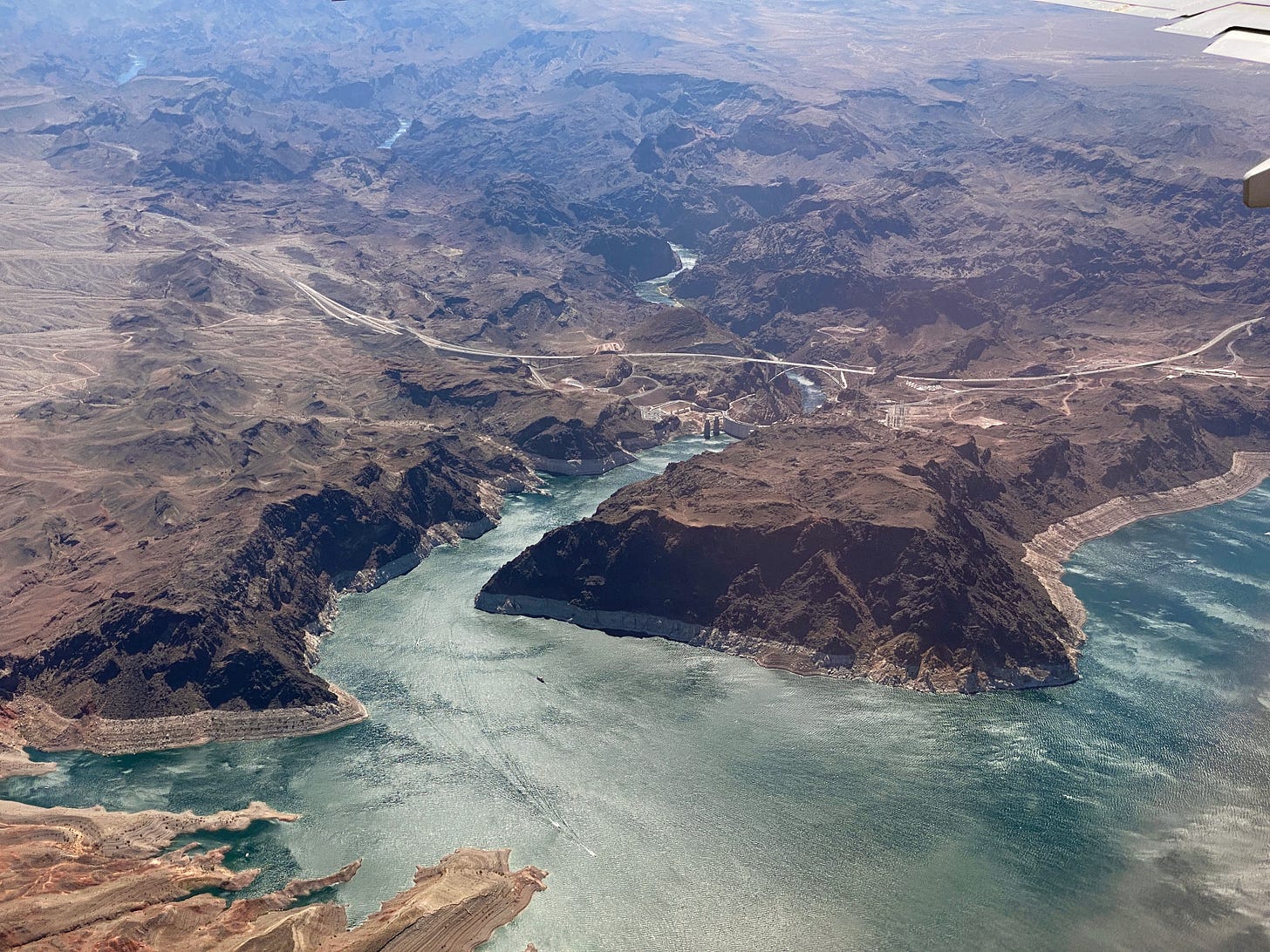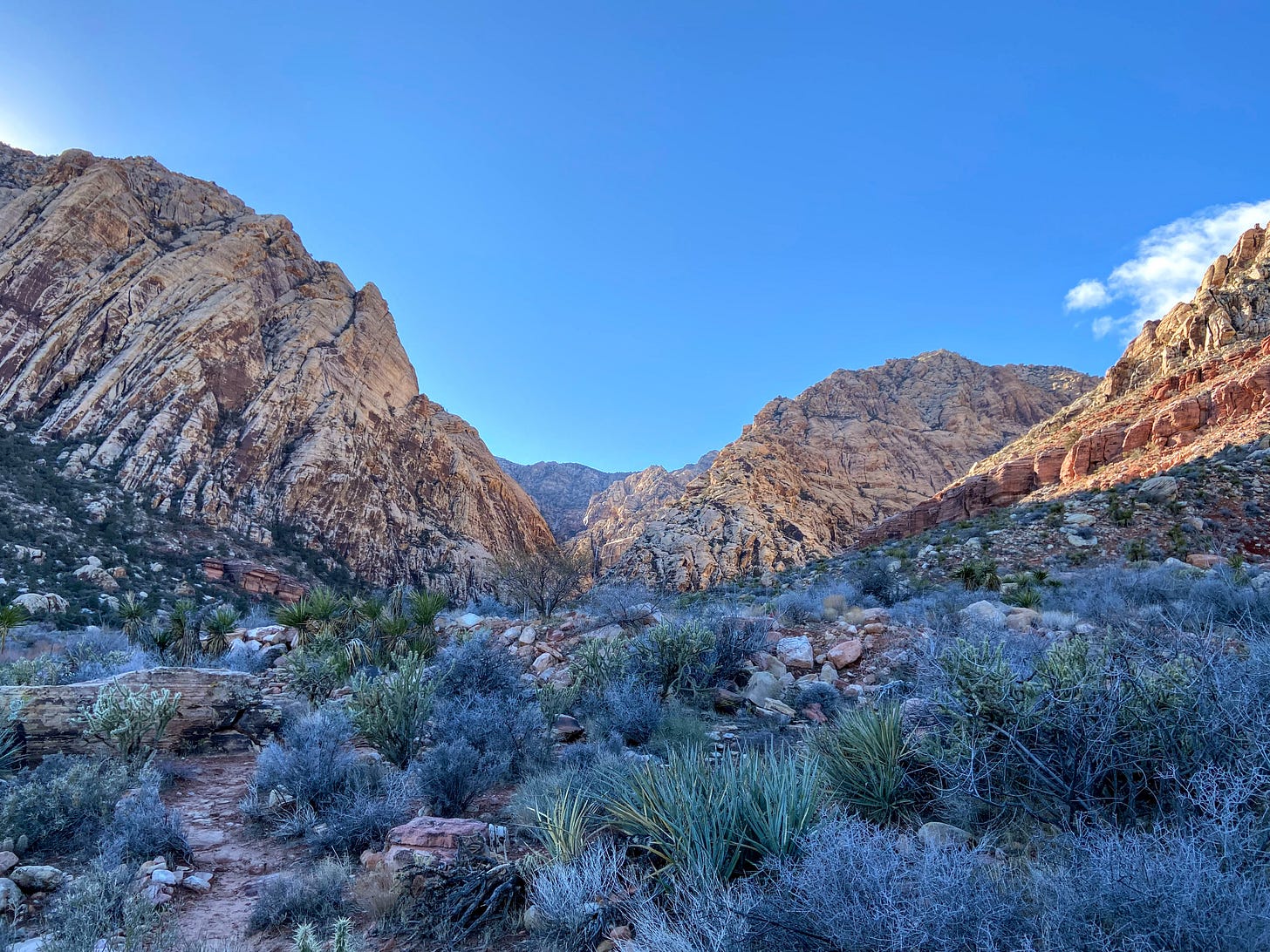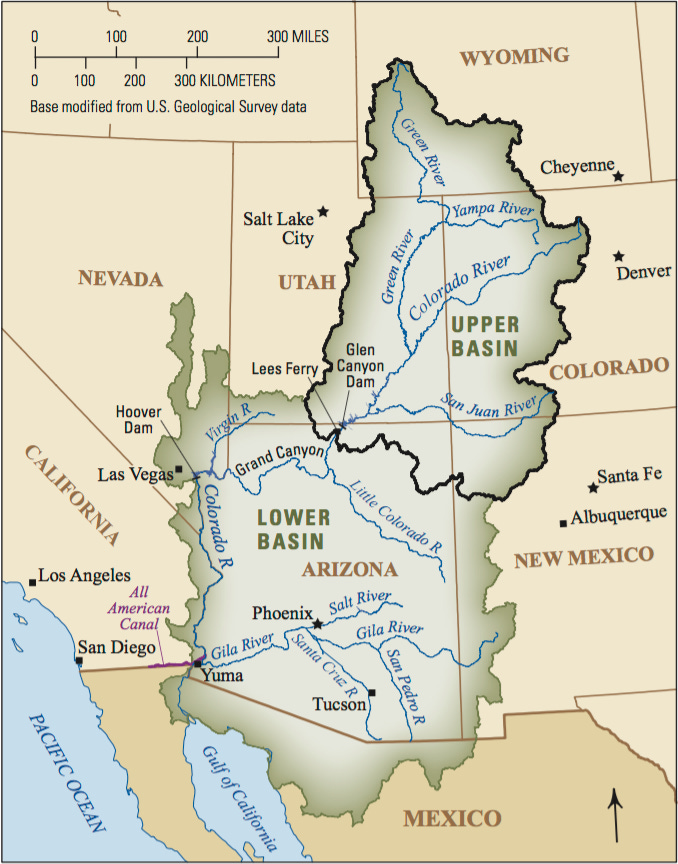The South West Water Crisis and the Las Vegas Question?
Las Vegas faces water and energy limits. Learn how Lake Mead, drought, and Colorado River politics shape the Southwest’s future—and who will feel it most.
Water Crisis
An extreme drought has been effecting the South West portion of the United States. The ongoing water crisis is especially concerning for the residents of Las Vegas. The area around Las Vegas is one of the most hostile to life. A short drive outside Las Vegas reveals a gorgeous landscape but extremely arid with little vegetation or agricultural lands.
According to NOAA 30 year climate average from 1991-2020, Las Vegas receives on average 4.18 inches of rainfall a year at the weather station located by the airport. In order to grow crops without irrigation, the average rainfall most be above 25 inches. As such, the surrounding areas of Las Vegas cannot grow crops without irrigation water, which means that the food must be imported from other regions.
There would simply be no Las Vegas without the water provided by the Colorado River, which originates all the Way from high rocky mountain in Colorado with many significant tributaries from Wyoming, Utah, New Mexico, and Arizona. Unfortunately, the Colorado River watershed has been receiving less snowfall, which is now creating a crisis for the South West region.
According to the United States Bureau of Reclamation(USBR), the construction of the Hoover Dam started on April 20, 1931, and all the features of the dam were completed on March 1, 1936.
Because of the Hoover Dam, a reservoir, which is a manmade Lake, created what we now know as Lake Mead. In addition, to just providing water to Las Vegas, the Colorado River also produces electricity via the Hoover Dam. According to USBR, the Hoover Dam produces 4 billion kilowatt-hours of hydroelectricity each year, which is enough to serve 1.3 million people.
The Electricity Challenge
For the Hoover Dam to function properly, Lake Mead elevation must 1,050 feet or higher. If water drops below 1,050 feet, the dam can still produce energy but generates less and less as the water continues to drop. If the water were to drop below 950 feet, the Hoover would completely seize producing energy. The electricity challenge will be expensive but can be resolved by building new energy plants. Another important term is dead pool which is the minimum water elevation for water flow out of the dam. According to the National Park Services, the Hoover Dam dead pool is 895 feet.
The Water Challenge
Since there is no life without water, this is without a doubt the most concerning issue. Las Vegas was first served by intake pipe 1, which requires Lake Mead’s level to be above 1,050 feet. Lake Mead pipe 1 is no longer able to function as of this year. A second intake pipe was built in the year 2000 at 1,000 feet, which specialists assumed would have been low enough. Fortunately for the residents of Las Vegas, a third intake pipe was built in April 2020 with a minimum water level of 860 feet, as the water authority saw the urgent need to protect the population from being deprived of water. Since the Hoover Dam dead pool is 895 feet, the third intake pipe at 860 feet will always have access to the bottom of Lake Mead.
In July 2022, Lake Mead’s water level plummeted to a historic low of 1,040.92 feet. This milestone was alarming because it meant that both the original intake pipe and the second intake pipe were dangerously close to being rendered useless, leaving only the third intake as a reliable source. The drop underscored the severity of the ongoing drought and the urgent need for water conservation and long-term solutions, as the city’s water security now depends almost entirely on the new, deepest intake.
Conclusion
The two immediate challenges for Las Vegas will be negotiating with California and Arizona in regards to water and electricity. According the USBR, California receives 55.92% of the electricity generated while Nevada receives 25.13% and Arizona 18.95%. If Lake Mead water level were to drop to 950 feet, the Hoover Dam would stop producing electricity in as little as three years if Lake Mead were to drop on average 30 feet per year. In short, the cost of electricity will go up, but Las Vegas will manage the energy conundrum.
When it comes down to the water crisis, the situation could be dire in as little as six years if Lake Mead were drop on average 30 feet per year. However, it is unlikely for the Colorado River to go completely dry, which means that there will always be some water in Lake Mead. The challenge will be in negotiating the water rights with California and Arizona, which currently have the largest water apportion. The Boulder Canyon Project Act apportion California with 58.67%, Arizona 37.33%, and Nevada a meager 4% of water from the Colorado River. One thing is for sure, the agricultural sector of California and Arizona will be devastated and will more likely cease to exist if the worst scenario happens. In the end, Las Vegas will survive the challenge with some economic impact but it is California and Arizona who will face great economic consequences. Las Vegas is already one of the most water efficient city and Las Vegas has further implemented vital programs like banning inefficient landscape like lawn for desert landscape instead. In the end, humans have a great ability to adapt, so while the challenge is real, it is possible for the whole South West to re-invent itself by becoming more water efficient and living in harmony with the climate with scare water resources.
Disclaimer: The views expressed in this article are solely my own and do not reflect those of any public agency, employer, or affiliated organization. This blog aims to educate and empower readers through objective geographic and planning insights, fostering informed discussion on global and regional issues



